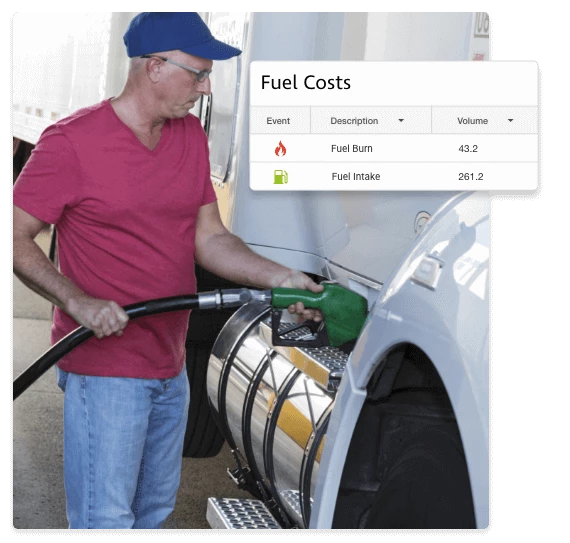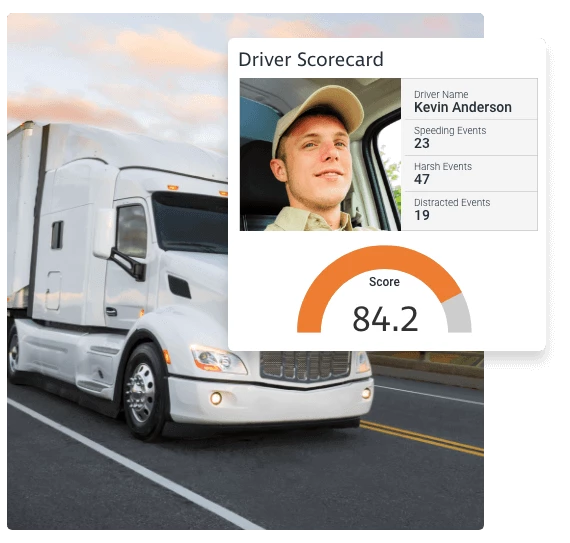Key Takeaways
Driver tracking systems offer fleet managers a more complete picture of driver performance by tracking driver activity across all of the vehicles or equipment that they operate. This enables managers to run driver based reporting, which is particularly useful when drivers operates multiple vehicles and the business is running driver performance scorecards. Driver tracking systems let fleet managers:
- Monitor driver data in groups or at the individual level
- Follow drivers from vehicle to vehicle
- Ensure the right drivers are paired with the right vehicles via secure driver ID
- Improve driver safety through personalised coaching
What is Driver Tracking?
Driver tracking systems monitor driver activity rather than vehicle activity enabling driver performance metrics to be maintained when drivers operate different vehicles or equipment. Drivers and operators are logged in and out each time they use a vehicle or piece of equipment and the data collected is saved against the driver for the duration that they are logged into the vehicle. This enables fleet managers to run driver based reporting, which is critical when drivers don't consistently use the same vehicle. Performance metrics that driver tracking systems collect include:
- Usage
- Idle time
- Speeding
- Acceleration and braking
- Harsh cornering
- Fatigue
- Distracted driving
- And more
The data collected on drivers can be used to provide accurate insight into the performance of individual drivers through scorecards, or combined with other fleet data to understand the impact the driver is having on a fleet operation, for example you could use a driver tracking system to identify if a particular driver is contributing to high vehicle or equipment maintenance costs.
Benefits of Driver Tracking
Driver tracking systems bring several benefits, including lower fuel and maintenance costs, longer vehicle and equipment life, and, best of all, a more engaged and happier customer base. Let’s look at how:
- Driver safety: The first benefit of driver tracking software is that it enables fleet managers to run a safer fleet. With accurate and complete driver performance data users can implement effective coaching programs and build a culture of safety within their organisation.
- Fuel and maintenance costs: Driver tracking systems benchmark driver performance and alert managers to both good and bad driving behaviours. If a vehicle’s brakes seem to be wearing faster than other similar vehicles or a piece of equipment is running through more fuel than its counterparts, driver or operator behaviour may be the cause.
- Vehicle and equipment lifespan: The way a vehicle is operated can have a significant impact on its lifespan. Harsh driving behaviours, such as excessive acceleration, slamming on the brakes, or taking corners too fast can all reduce lifespan. Fatigue and distracted driving can lead to accidents, which can take a vehicle and its driver off the road indefinitely.
- Happier customers: Knowing where a driver is at all times and having constant communication in regard to schedules and delivery times is key to customer loyalty. According to one study, 93% of customers want visibility into the delivery journey and 47% say they won’t use a company again if it doesn’t provide that visibility.

How Do Driver Tracking Systems Work?
Modern driver tracking systems use digital identification cards, key fobs or pin codes to log drivers in and out of vehicles or equipment. Using one of these methods drivers can quickly identify themselves prior to starting their journey and all of the data recorded will be assigned to the logged in driver and the vehicle. To ensure drivers are logging in many operators include this as a step in their pre-use checklists.
With performance data accurately recorded against drivers users have access to driver based reporting and the ability to create performance scorecards and league tables, which 96%* of telematics users are using to reduce accident rates.
*Based on data from the 2023 Telematics Survey

How Can Fleet Managers Use Driver Tracking Data?
Data gathered through driver tracking is useful in many ways. Fleet managers are no longer limited to vehicle based reporting and with complete visibility of a drivers activity they can:
Audit Speeding Tickets
Managers can easily check who was operating a vehicle when a speeding ticket was issued. They alternatively can see who’s behind the wheel anytime the software issues a speeding alert. The alert features are available in real time. Of course, the same is true of other moving and non-moving tickets.
Verify Timesheet Reports
The driver data gathered isn’t a substitute for timesheets, as drivers regularly have pre-driving checklists, loading/unloading duties, and other obligations that aren’t actual vehicle operations. The data from driver tracking can be used to corroborate timesheets, though. Managers can check when drivers are clocking in/out, when they’re driving, and estimate what other responsibilities they have. If the hours don’t add up, managers can ask informed and detailed questions.
Monitor Non-Work Activity
Managers can check where drivers go on routes, where they take breaks, and how long those breaks are. They can also see whether anyone’s driving a vehicle for personal use after work (if that’s not permitted).
When drivers always operate the same vehicle, all of this information is already available through traditional fleet management software. Now it’s available when drivers don’t always use the same equipment.
Improve Driver Safety
Extensive data can be gathered about driver habits, including acceleration, speed, deceleration and more. Managers can use this information to promote driver safety through scorecards, personalized coaching and rewards programs.
Decrease Fuel Costs
Data about routes and driving habits helps managers keep fuel costs lower. Managers can check whether all drivers are taking the same routes to destinations, and then deduce which driver has the most efficient route if there are variances. Many of the same driving habits that can be used to improve safety will simultaneously help decrease fuel costs. Managers can identify which drivers are accelerating too quickly, stopping too harshly, and otherwise going through excessive fuel.
Improve Customer Satisfaction
Knowing where drivers are at all times makes it easier to accommodate last-minute customer requests. Whether someone contacts a manager for a short-notice delivery, service call, or other reason, managers can instantly see which drivers would be able to accommodate the same-day change.
Comparing the Best Driver Tracking Systems
When selecting a driver tracking system, it’s important to do a side-by-side comparison. Since no two systems are the same, you want to make sure you’re comparing apples to apples.
When comparing systems, look for the following:
- Industry reputation: Does the driver tracking system provider have a proven reputation within your industry and do they understand your business needs.
- Safety analytics: Improved safety is one of the greatest benefits of implementing a driver tracking system. Make sure the provider you choose offer the data and reports you need for success.
- Installation: Many companies offer multiple forms of device installation including hard-wired, tamperproof professional installs, self-install plug-and-play options and battery-powered devices.
- Fees: The vast majority of commercial-grade driver tracking systems operate on a SaaS (Software as a Service) model, meaning you pay a monthly fee per device per month. But be sure to compare ancillary fees, such as installation charges, activation fees and feature upcharges.
- Speed: Ensure your data is transmitted in real-time with minimum delay for the most useful information.
- Compatibility: Last, but not least, is compatibility. The driver tracking system you select must be compatible with multiple different makes and models of vehicles or equipment and with multiple telematics systems.
The Teletrac Navman fleet management software offers a range of robust driver identification solutions and a comprehensive reporting engine that ensures you can monitor driver performance when drivers are using multiple vehicles. Take a look at the solutions we can offer using our online product builder and setup your solution consultation today.

